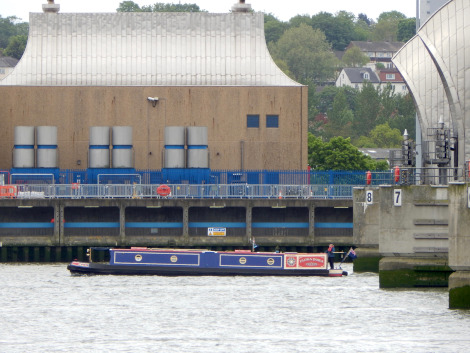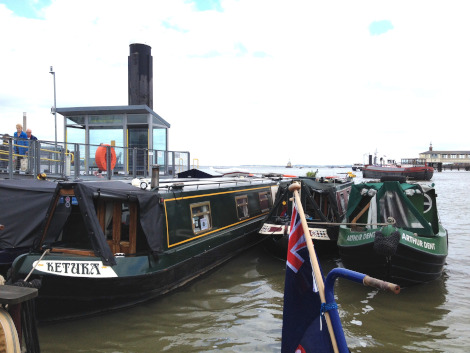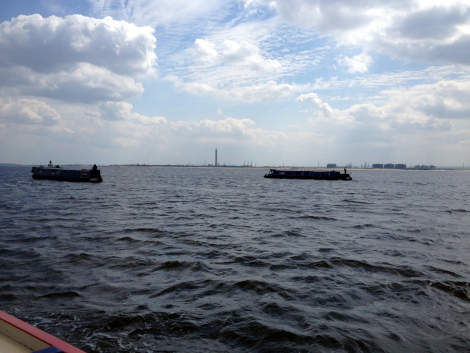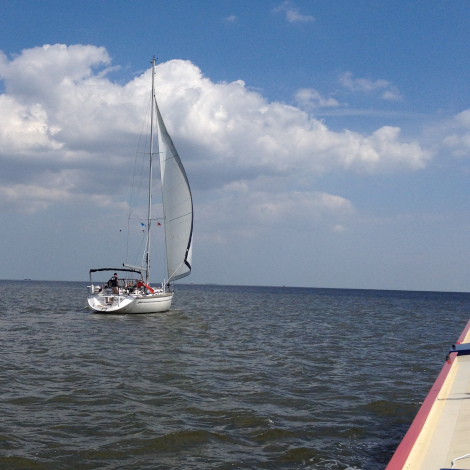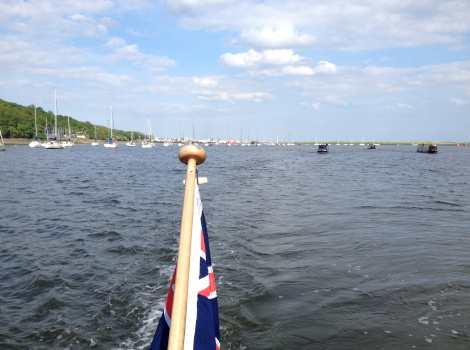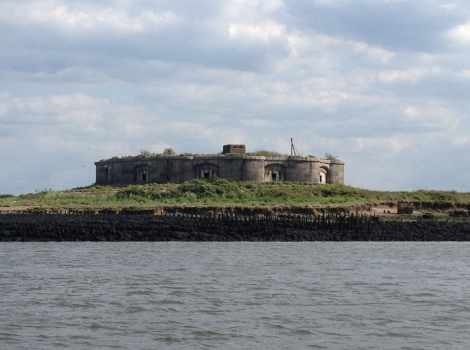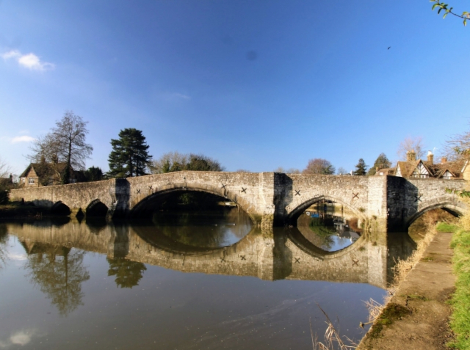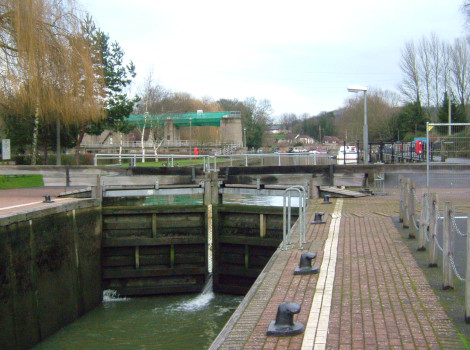Limehouse to Aylesford
|
The run down from Limehouse was generally
uneventful, through the barrier and the usual
pas-de-deux with the Woolwich ferry which is always
needed as ten narrowboats in line astern take longer
to get past the ferries than their turn around time
and we always have to split to let them through. We were joined at Barking Creek by one of the residential barges who wanted to give his engine a good run and came down for the overnight at Gravesend and the meal in the Three Daws with us – he can be seen moored to one of the buoys just downstream of us. An excellent meal was had in the evening in the Three Daws, an historic tavern dating from the 1400s offering locally sourced British fare and ales – so their web site says. Ideally placed as only 20 yards from the entrance to the Town Pier and lives up to their blurb serving excellent food, wine and ales. After a peaceful night – not something that we always get at Gravesend – we set off for Sea Reach and the wide spaces of the lower Thames Estuary. The waterway was quiet and only a few ships heading to Tilbury or Thames Haven, the waves we encountered were caused far more by the sea-going tugs that pushed up great bow waves as they headed about their work. One of our number got caught out and could be seen with his floor carpets on the roof to dry after a wave had found his open front doors as a nice way in. |
Passing through the Barrier |
|
Moored to Town Pier at Gravesend |
Looking very small against
the Isle of Grain |
|
Meeting a friend under sail |
Motoring down Sea Reach and keeping well clear of
the Yantlet Sand we realised we were closer to the
end of Southend Pier to the North than to the Isle
of Grain to the South, over a mile from land in
either direction, an odd place for narrowboats. The masts and warning buoys of the SS Richard Montgomery came into
view, this a WW II wreck of a US Liberty ship
bringing munitions to the UK. She still has some
1.400 tons of explosives in the hold which if
detonated would cause considerable damage to
Sheerness and industrial works on the Isle of Grain. The tide was now turning to help us into the River
Medway as we turned South to the relatively
protected waters of the Medway Estuary. After
Sheerness the flotilla divided, four of us heading
up the river for moorings at Aylesford Lock off the
tidal river, the others for a couple of nights at
Queenborough on The Swale. Reaching Chatham the river banks finally became
clear and we followed the centre of the reducing
channel, a couple of sharp bends and beneath the
14th century bridge at Aylesford to arrive with the
tide having followed us to give enough water to lock
up onto the non-tidal Medway that would be the
boat's home for the next five weeks. We were directed to secure moorings on the lock
island by the very helpful lock-keeper and settled
for some strong drinks as the sun went down on the
end of an exhilarating days boating. After supper we
settled down to a well-deserved and very peaceful
night's sleep. A taxi to Maidstone station for our journey home
for a week saw Flora Dora safe with Dragonfly and
under the watchful eye of the lock-keeper. |
|
Land starting to close in |
Napolionic Fort at Hoo in the
estuary |
|
C14 bridge at Aylesford |
The tidal lock at Allington |
